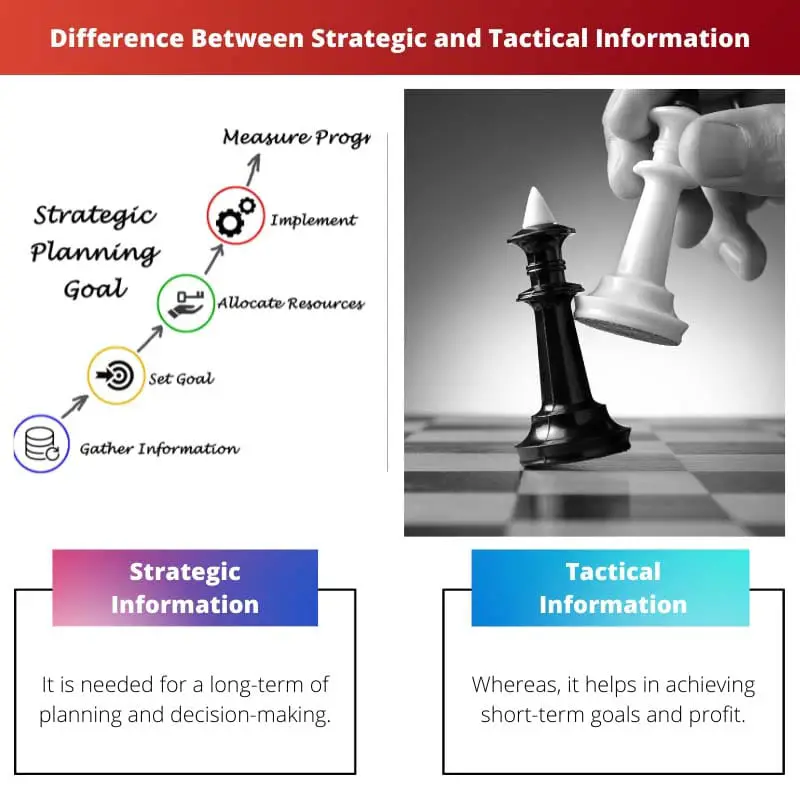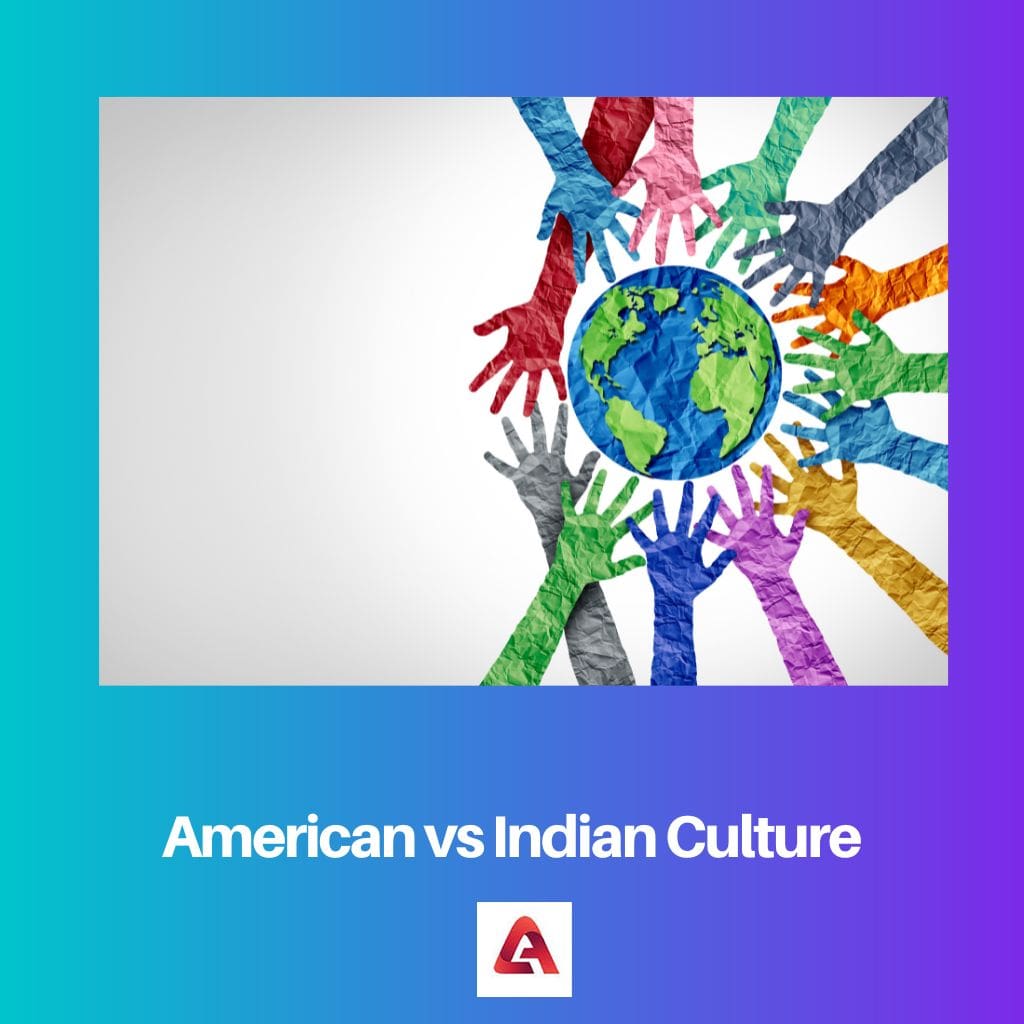Strategic information pertains to long-term planning and decision-making, focusing on broader goals and objectives. Tactical information, on the other hand, deals with short-term actions and implementation, addressing immediate challenges and opportunities.
Key Takeaways
- Strategic information is long-term, broad-based, and focused on achieving organizational goals and objectives.
- Tactical information is short-term, specific, and focused on implementing strategic decisions.
- Strategic information is used by top-level managers, while middle-level managers use tactical information.
Strategic vs Tactical Information
The difference between Strategic and Tactical information is that strategic information deals with the “what” and “why” part of an information system related to a company’s to-do plans for the future. At the same time, tactical information relates to “how” those plans are implemented.

Comparison Table
| Feature | Strategic Information | Tactical Information |
|---|---|---|
| Focus | Big picture: Understanding the overall goals, environment, and long-term plans | Specific actions: Providing details and data for immediate actions and decision-making |
| Timeframe | Long-term (months, years) | Short-term (days, weeks) |
| Level of detail | High-level overview, broader trends | Specific and actionable details |
| Source | External market research, industry reports, competitor analysis | Internal data, reports, operational metrics |
| Purpose | Inform strategic decision-making, set direction | Facilitate execution of plans, solve specific problems |
| Examples | Market share trends, competitor capabilities, long-term economic forecasts | Customer data, resource availability, product performance metrics |
| Impact | Shapes the overall strategy and direction | Provides immediate guidance for specific tasks |
What is Strategic Information?
Strategic information encompasses data and insights that are vital for long-term planning and decision-making within an organization. It serves as the foundation upon which strategic objectives and goals are formulated and pursued.
Components of Strategic Information
- Long-Term Perspective: Strategic information provides a comprehensive view of the organization’s internal and external environment over an extended period. It involves analyzing market trends, competitor strategies, technological advancements, regulatory changes, and other factors that could impact the organization’s future.
- Alignment with Goals: Strategic information is closely aligned with the overarching goals and objectives of the organization. It helps leaders identify opportunities for growth, anticipate potential risks, and make informed decisions that steer the company towards its desired outcomes.
- Resource Allocation: Strategic information assists in resource allocation by guiding investments in areas that align with the organization’s long-term vision. It enables leaders to prioritize initiatives, allocate budgets effectively, and optimize the allocation of human, financial, and technological resources.
- Scenario Planning: Strategic information facilitates scenario planning, allowing organizations to anticipate different future scenarios and develop contingency plans accordingly. By understanding potential opportunities and threats, leaders can adapt their strategies to navigate uncertainties and capitalize on emerging trends.

What is Tactical Information?
Tactical information encompasses data and insights that are essential for short-term decision-making and operational execution within an organization. It focuses on the implementation of strategies and initiatives to achieve immediate goals and objectives.
Components of Tactical Information
- Short-Term Focus: Tactical information is oriented towards addressing immediate challenges and opportunities faced by the organization. It involves monitoring day-to-day operations, identifying bottlenecks, and making real-time adjustments to ensure efficient performance and resource utilization.
- Operational Efficiency: Tactical information plays a vital role in enhancing operational efficiency by providing managers and frontline staff with timely and relevant data. This information includes metrics such as production output, inventory levels, sales performance, and customer feedback, which enable teams to streamline processes and improve productivity.
- Decision Support: Tactical information serves as a foundation for decision-making at operational levels within the organization. It helps managers and supervisors make informed choices regarding resource allocation, staffing levels, workflow optimization, and other operational matters to achieve short-term objectives while staying aligned with strategic goals.
- Feedback Loop: Tactical information facilitates a feedback loop that enables continuous improvement within the organization. By collecting data on operational performance and outcomes, teams can identify areas for refinement, implement corrective measures, and adapt their tactics to changing circumstances in real-time.

Main Differences Between Strategic and Tactical Information
- Time Horizon:
- Strategic Information: Focuses on long-term planning and decision-making, spanning months or years.
- Tactical Information: Concentrates on short-term actions and operational execution, addressing daily or weekly activities.
- Scope and Depth:
- Strategic Information: Considers broad organizational objectives, market trends, and competitive landscape analysis.
- Tactical Information: Deals with specific operational details, resource allocation, and immediate performance metrics.
- Decision-Making Level:
- Strategic Information: Primarily used by top-level management for high-level strategic planning and direction setting.
- Tactical Information: Utilized by middle and frontline managers for day-to-day decision-making and operational control.
- Flexibility and Adaptability:
- Strategic Information: Requires flexibility to adapt to long-term shifts in market conditions, technology, and business goals.
- Tactical Information: Requires agility to respond quickly to short-term fluctuations, operational challenges, and emerging opportunities.





